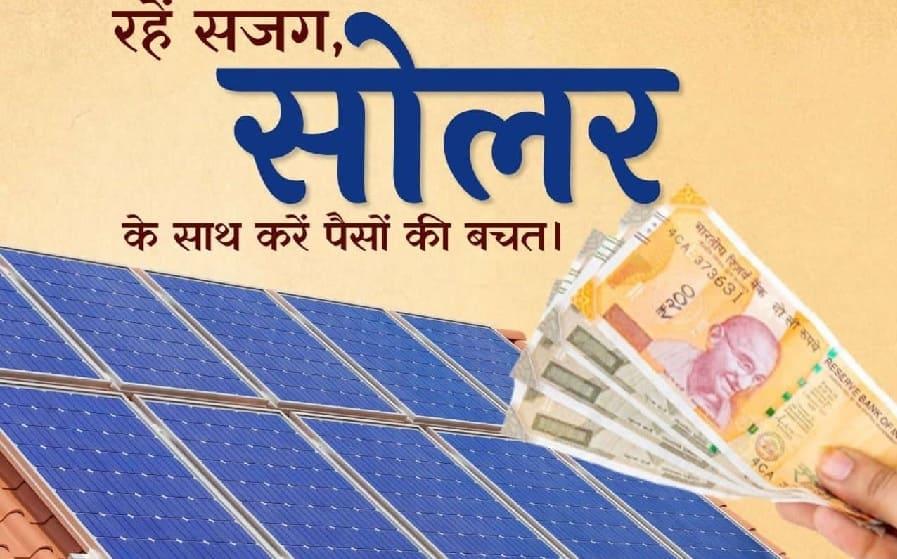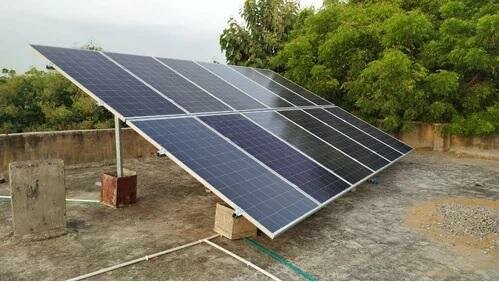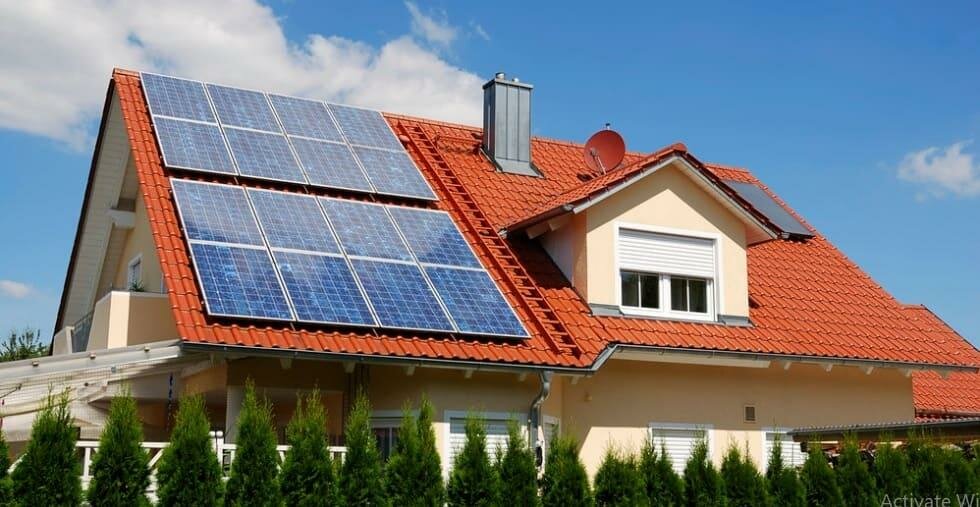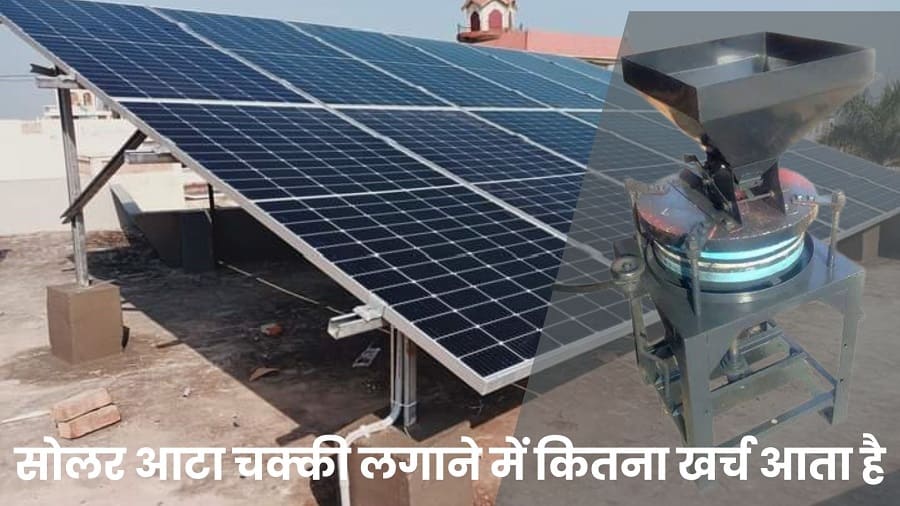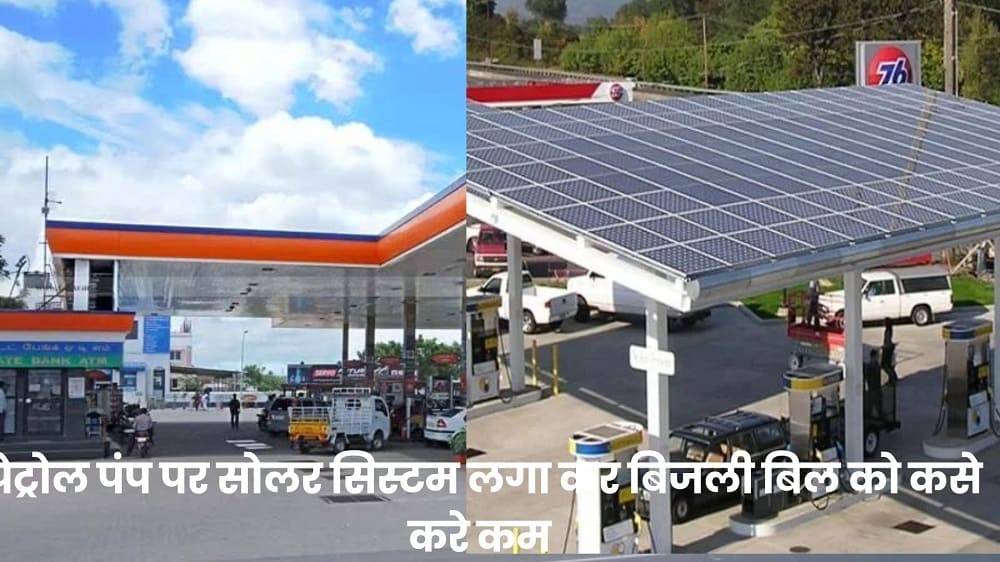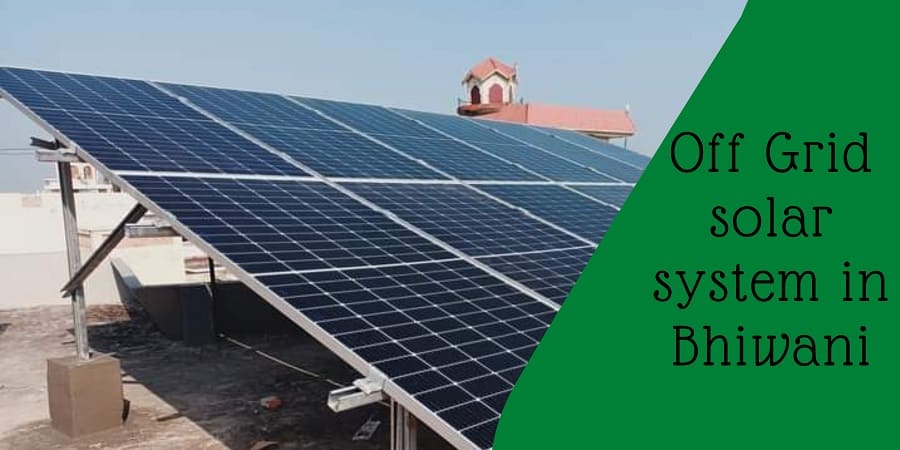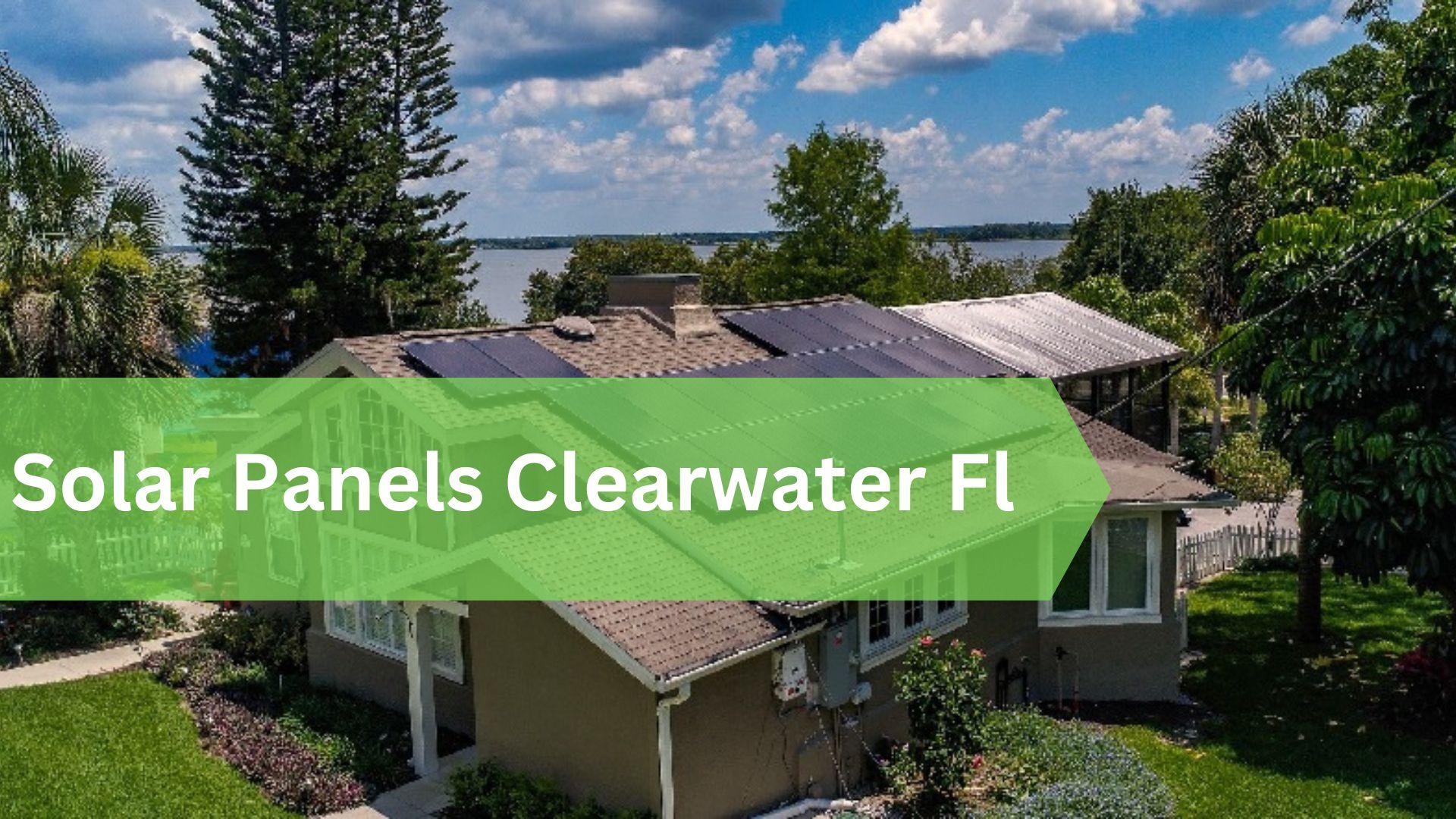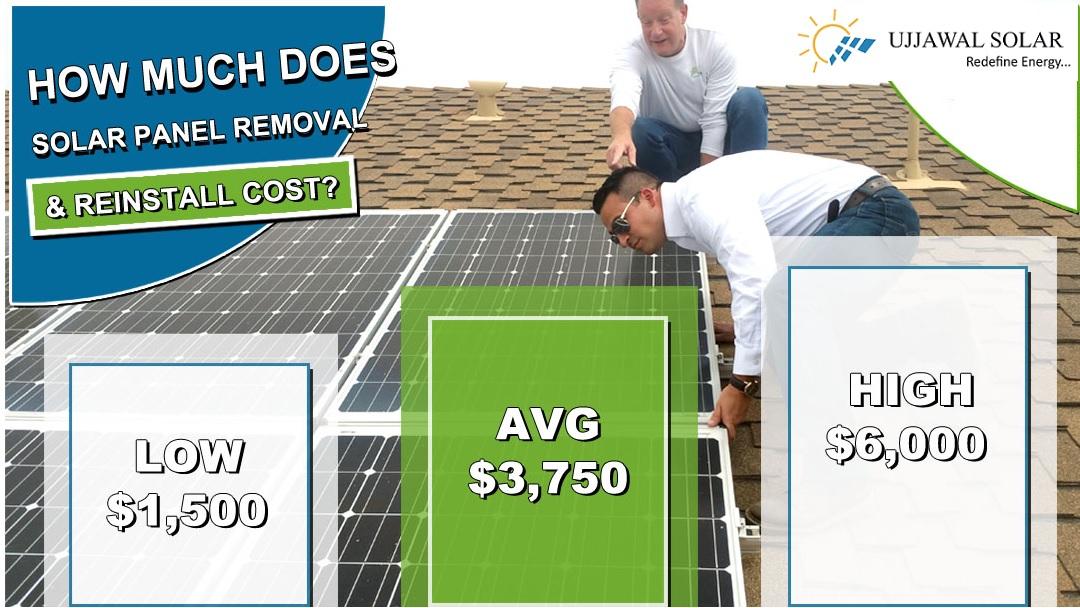Solar Panel Price In Sangli – Sangli is a city in the Indian state of Maharashtra, which has adopted solar energy to fulfill its electricity needs for a long time. The region’s abundant sunlight and a growing awareness of environmental concerns have fueled the adoption of solar energy solutions. Solar panels use the sun’s energy to generate electricity for homes, businesses, and public facilities. The Solar In Sangli initiative has encouraged local communities to transition to solar power, promoting clean and renewable energy sources while reducing the city’s carbon footprint. This shift not only contributes to a greener environment but also positions Sangli as a forward-thinking hub for clean energy initiatives.
Solar Panel Price In Sangli
The prices of solar panels in Sangli, India, varied based on several factors. The prices fluctuated depending on the brand, quality, wattage, and efficiency of the solar panels. Additionally, government incentives, subsidies, and tax benefits played a significant role in reducing the overall cost for consumers. On average, the cost of solar panels ranged from INR 60,000 to INR 95,000 per kilowatt (kW) for residential installations. These initiatives aimed to encourage the adoption of solar energy in Sangli and across Maharashtra. For the most current and precise pricing information, it is advisable to reach out to local solar vendors or consult recent market updates.
How do solar panels convert sunlight into Electricity?
Solar panels convert sunlight into electricity through a process called the photovoltaic effect. The key components of a solar panel are solar cells, typically made of silicon. When sunlight, which is composed of particles of energy called photons, strikes the solar panel, these photons are absorbed by the silicon atoms in the solar cells.
- Electron Excitation: The absorbed photons transfer their energy to electrons in the silicon atoms, causing them to become energized and break free from their usual positions in the atomic structure. This energizing process generates electron-hole pairs, where electrons gain energy and move to a higher energy state, leaving behind positively charged “holes” in their original positions.
- Electric Field Generation: The semiconductor material within the solar cells creates an electric field due to the presence of differently charged layers. This electric field acts as a pathway for the energized electrons, directing them toward the surface of the solar cell.
- Electron Flow and Electricity Generation: The energized electrons, now in motion due to the electric field, flow out of the solar cell through metal contacts on the surface of the solar panel. This flow of electrons constitutes an electric current, and when the electrons pass through the conductive wiring, they can be harnessed to power electrical devices.
- Direct Current (DC) Electricity: The electricity generated by the solar cells is in the form of direct current (DC), which is the same type of electricity produced by batteries. However, most homes and businesses use alternating current (AC) electricity. To make it compatible, an inverter is used to convert DC electricity into AC electricity, which is then ready for use in homes or can be fed into the grid.
How Much Money I Can Save Monthly by Using Solar Panel
By using solar Systems, you can save a significant amount of money on your monthly electricity bills.
| Solar System | Units | Saving |
| 1kw Solar system Per Months Generation | 5 Units | 30-40 RS. Per Day |
| 1kw Solar system Per Months Generation | 150 Units | 900 – 1200 RS. Per Months |
| 1kw Solar system Per Year Generation | 1800 Units | 10800 – 14400 RS. Per Year |
Maharashtra Electricity Board (GEB) Units Rate
| Heads | Charges |
|---|---|
| Upto 150 kWh/month (Rs /kWh) | Rs 5.50 |
| 151-300 kWh/month (Rs /kWh) | Rs 6 |
| 301-500 kWh/month (Rs /kWh) | Rs 6.50 |
| Above 500 kWh/month (Rs /kWh) | Rs 7 |
Benifits of installing solar panels for homes in Sangli?
Installing solar panels for homes in Sangli, or any region, offers a multitude of benefits:
- Renewable Energy Source: Solar panels utilize sunlight, a renewable and abundant source of energy, ensuring a sustainable power supply for homes in Sangli.
- Reduced Electricity Bills: By generating their own electricity, homeowners can significantly reduce their reliance on the grid, leading to lower monthly electricity bills and potential savings.
- Environmentally Friendly: Solar energy is a clean, green, and emission-free power source, contributing to a reduction in carbon footprint and combating climate change.
- Government Incentives and Subsidies: Various government incentives, subsidies, and tax benefits are available for installing solar panels, making the initial investment more affordable and encouraging adoption.
- Energy Independence: Solar panels provide a degree of energy independence, ensuring a consistent power supply even during grid outages or disruptions, enhancing resilience.
- Increased Property Value: Homes equipped with solar panels tend to have higher property values due to the added appeal of reduced energy costs and environmental benefits.
- Net Metering and Feed-in Tariffs: Net metering allows excess electricity generated to be fed back into the grid, earning credits or compensation, promoting efficient use and distribution of solar energy.
- Low Maintenance: Solar panels require minimal maintenance, with occasional cleaning and regular check-ups, resulting in long-term cost savings and hassle-free operation.
- Job Creation and Economic Growth: The solar industry creates job opportunities and contributes to economic growth at the local and national levels.
- Community and Environmental Impact: By choosing solar power, homeowners in Sangli contribute to a cleaner environment, supporting the community’s efforts to embrace sustainable energy practices.
How We Can Reduce Our Home Electricity Bills in Sangli?
Reducing home electricity bills in Sangli, or any region, involves a combination of energy-efficient practices, smart habits, and utilizing renewable energy sources. Here are several effective ways to achieve this:
- Install Solar Panels: Consider installing solar panels on your property to generate your own electricity. Solar power can significantly reduce your reliance on the grid and lower your electricity bills.
- Energy-Efficient Appliances: Replace old, energy-hungry appliances with newer, energy-efficient models. Look for ENERGY STAR-rated appliances that meet energy efficiency standards.
- LED Lighting: Replace traditional incandescent bulbs with energy-efficient LED lights. LED bulbs consume significantly less energy and last longer, reducing both energy usage and replacement costs.
- Proper Insulation: Ensure your home is well-insulated to minimize heat transfer during summers and winters. This helps maintain a comfortable indoor temperature without overreliance on heating or cooling systems.
- Energy-Efficient HVAC Systems: Install energy-efficient heating, ventilation, and air conditioning (HVAC) systems. Regularly service and maintain these systems to keep them running optimally.
- Seal Air Leaks: Identify and seal any air leaks in your home, such as gaps around doors, windows, and vents. Proper sealing can improve energy efficiency and reduce the workload on your HVAC system.
- Use Natural Ventilation: Take advantage of natural airflow by strategically opening windows and using ceiling fans to maintain a comfortable indoor climate.
- Turn Off and Unplug Devices: Make it a habit to turn off lights, electronics, and appliances when not in use. Unplug chargers and devices that draw power even in standby mode.
- Energy-Efficient Water Heating: Set your water heater to a lower temperature and insulate the hot water tank to reduce energy consumption. Consider investing in a solar water heater.
- Optimize Refrigerator Use: Keep the refrigerator and freezer well-stocked, but not overcrowded, to maintain energy efficiency. Ensure the door seals are tight and minimize the frequency of opening and closing the doors.
- Use Energy Management Systems: Install smart energy management systems that allow you to control and monitor your home’s energy usage, enabling you to make informed decisions to optimize consumption.
- Time-of-Use Tariffs: Check if your utility offers time-of-use tariffs and adjust your energy usage to take advantage of lower rates during off-peak hours.
- Energy Audits: Conduct a professional energy audit to identify areas where energy is being wasted and implement recommended improvements to increase energy efficiency.
What are the Types of Solar Panels In Sangli?
These solar panel types are not specific to Sangli but are prevalent globally. Here are the common types:
- Monocrystalline Solar Panels: These panels are made from a single crystal structure of silicon, offering high efficiency and a sleek black appearance. They are efficient in converting sunlight into electricity and are space-efficient, making them suitable for rooftops in Sangli.
- Polycrystalline Solar Panels: Polycrystalline panels are made from multiple silicon fragments, providing a more cost-effective option. While slightly less efficient than monocrystalline panels, they are widely used in Sangli and other regions for solar installations.
- Thin-Film Solar Panels: Thin-film panels use various materials like amorphous silicon, cadmium telluride, and copper indium gallium selenide. They are flexible, lightweight, and easier to integrate into different applications. While less efficient, they perform better in low-light conditions, suitable for varying weather patterns in Sangli.
- Bifacial Solar Panels: Bifacial panels can capture sunlight from both sides, increasing overall energy production. They can be monocrystalline or polycrystalline and are efficient in capturing reflected light, making them useful in environments with reflective surfaces.
What are the Types of Solar Systems in Sangli?
In Sangli, like in many regions, various types of solar power systems are utilized to harness solar energy for different applications. Here are the common types of solar systems in Sangli:
- On-Grid Solar Systems: These systems are connected to the local electrical grid. Excess electricity generated by the solar panels can be fed back into the grid, and homeowners may receive credits for the surplus energy. They are common in urban and suburban areas where the grid is accessible.
- Off-Grid Solar Systems: Off-grid systems are standalone systems that are not connected to the electrical grid. They often include energy storage solutions like batteries to store excess energy for use during periods of low sunlight. These systems are prevalent in remote or rural areas where grid access is limited or unavailable.
- Hybrid Solar Systems: Hybrid systems combine elements of both grid-tied and off-grid systems. They are connected to the grid and have battery storage, allowing for energy storage and use during grid outages or at night. Excess energy can be stored in batteries or fed back into the grid.
Solar Panel Prices for Homes In Sangli
Solar energy has gained significant traction in Sangli, a city in Maharashtra, India, owing to its abundant sunlight and growing sustainability awareness. The region has witnessed a surge in solar installations, ranging from residential rooftops to large-scale solar farms. The prices of solar panels for homes in Sangli, India, varied based on factors such as the type of solar panels, capacity, brand, quality, and installation costs. On average, the cost per kilowatt (kW) ranged from INR 60000 to INR 95,000. The overall cost of a solar panel system for a typical home would depend on the total capacity required and specific energy needs.
How do I apply for a Loan In Sangli for Solar?
To apply for a solar loan in Sangli or any region, follow these steps to streamline the process:
- Research Lenders: Conduct research to identify banks, financial institutions, or specialized lenders that offer solar loans in Sangli. Look for those that provide competitive interest rates, flexible terms, and suitable repayment options.
- Check Eligibility Criteria: Review the eligibility criteria set by the lenders to ensure you meet the requirements related to income, credit score, and other parameters. Typically, you need to be a resident of Sangli or the respective region to be eligible.
- Gather Documentation: Prepare the necessary documentation, including proof of identity, address, income, and credit history. Lenders may request bank statements, salary slips, tax returns, and property documents as part of the application process.
- Get Solar Panel Quotations: Obtain quotations from reputable solar panel vendors or installation companies for the system you plan to install. Include these quotations as part of your loan application.
- Calculate Loan Amount: Calculate the loan amount required based on the cost of the solar panels, installation charges, and any other related expenses. Ensure that the loan amount covers the complete solar system cost.
- Apply for the Loan: Visit the chosen lender’s branch or apply online through their website. Complete the loan application form and submit all the necessary documents.
- Wait for Approval: Await the lender’s decision on your loan application. The approval process may take some time as the lender evaluates your eligibility and creditworthiness.
- Accept Loan Offer: If approved, carefully review the loan terms, interest rates, repayment schedule, and any associated fees. Accept the loan offer if it meets your requirements.
- Complete Documentation: Fulfill any additional documentation or formalities required by the lender to finalize the loan agreement.
- Receive Loan Disbursement: Once all formalities are completed, the lender will disburse the loan amount directly to you or the solar panel vendor.
- Install Solar Panels: Use the loan amount to purchase and install the solar panels as per the agreed-upon quotation.
- Repay the Loan: Begin repaying the loan as per the repayment schedule agreed upon in the loan agreement.
How to Apply For Net Meters In Sangli?
To apply for a net meter in Sangli, Maharashtra, and connect your solar panel system to the grid, follow these steps:
- Contact the Electricity Distribution Company: Reach out to the local electricity distribution company in Sangli. In Maharashtra, this could be the Maharashtra State Electricity Distribution Company Limited (MSEDCL). Inquire about the process for net meter installation and get details on their specific requirements and procedures.
- Understand Net Metering Policies: Familiarize yourself with the net metering policies and guidelines set by the state government or the local electricity distribution company. Understand the terms and conditions, tariff rates, and other relevant information.
- Get a Solar PV System Installed: Install a solar PV system on your property that meets the technical and safety standards specified by the electricity distribution company. Ensure that the system is installed by certified and authorized solar installers.
- Submit Application: Submit an application for net metering to the electricity distribution company. Include all necessary documents such as your ID proof, address proof, solar installation details, and any other required documentation.
- Site Inspection: The electricity distribution company will conduct a site inspection to verify the solar PV system’s installation and its compliance with safety and technical requirements.
- Approval and Agreement: Upon successful inspection, the electricity distribution company will grant approval for net metering. You will need to sign a net metering agreement detailing the terms and conditions.
- Meter Installation: The electricity distribution company will install a bidirectional net meter at your premises. This meter will measure both the electricity consumed from the grid and the excess electricity generated and fed back into the grid.
- Connection to the Grid: The solar PV system is then connected to the grid through the net meter. Excess electricity generated by your solar panels is fed into the grid, and you receive credits for this surplus energy.
- Monitor and Maintain: Regularly monitor the net meter readings to track your energy consumption and production. Adhere to the maintenance requirements of the solar PV system and the net meter.
- Billing and Credit Settlement: The electricity distribution company will calculate your energy consumption and surplus generation. Depending on the net metering policy, you may receive credits on your electricity bill for surplus energy supplied to the grid.
How does solar help in farming in Sangli?
Solar energy can be highly beneficial for farming in Sangli and similar agricultural regions in several ways:
- Powering Irrigation Systems: Solar energy can power irrigation pumps and systems, ensuring a consistent and reliable water supply for crops. This is especially crucial in areas like Sangli, where agriculture heavily relies on effective irrigation due to the climate and seasonal variations.
- Reducing Energy Costs: Solar-powered irrigation systems can help farmers significantly reduce their energy expenses by generating their own electricity from sunlight, ultimately lowering the operational costs associated with pumping water for farming.
- Off-Grid Energy Solutions: In rural and remote areas of Sangli, solar energy can provide off-grid power solutions for farms that may not have access to the main electricity grid. This enables farmers to run essential farm operations without relying on conventional power sources.
- Distributed Energy Generation: Solar panels can be installed directly on farms, generating electricity locally and reducing transmission losses that occur when transporting electricity over long distances. This localized energy production enhances efficiency and reliability.
- Income Diversification: Farmers in Sangli can benefit from solar energy by diversifying their income streams. Besides crop production, they can lease or use their land for solar panel installations, thus earning additional revenue.
- Reducing Carbon Footprint: Adopting solar energy promotes sustainable farming practices by reducing reliance on fossil fuels. Solar power is clean and emits no greenhouse gases during operation, contributing to a reduced carbon footprint and a greener environment.
- Stabilizing Energy Supply: Solar energy offers a stable and uninterrupted power supply, especially during peak sunlight hours. This stability aids in maintaining optimal conditions for crops, such as temperature control in greenhouses or the usage of climate control systems.
- Promoting Sustainable Agriculture: Solar-powered farms align with sustainable agriculture principles by utilizing renewable energy to power various farming operations. This fosters a holistic approach to farming that considers both economic and environmental sustainability.
- Access to Government Incentives: Government incentives and subsidies for solar installations can further incentivize farmers in Sangli to adopt solar technology, making it more cost-effective and appealing for them to invest in solar energy solutions.
Conclusion
solar energy holds immense promise and benefits for Sangli, an agriculturally rich region in Maharashtra, India. The abundant sunlight in Sangli presents a valuable resource that, when harnessed effectively, can significantly impact both the agricultural and general sectors of the community. Solar power can revolutionize farming practices by providing a reliable and sustainable energy source to power irrigation systems, enhancing crop yields, and ensuring food security. Solar installations can help reduce energy costs for both farmers and residents, providing an economical and sustainable alternative to traditional energy sources.
Frequently Asked Questions (FAQ) for Solar in Sangli:
Q1 What are the advantages of solar energy for Sangli’s residents?
Solar energy in Sangli offers reduced electricity bills, a clean and sustainable power source, access to government incentives, and increased property value due to its positive environmental impact.
Q2 How can I determine the suitable solar panel type for my Sangli home?
Factors such as budget, available space, efficiency requirements, and aesthetic preferences will influence the choice of solar panel type. Consult with solar experts in Sangli to determine the most appropriate option for your needs.
Q3 Are there government incentives available for solar installations in Sangli?
Yes, both state and national governments often offer subsidies, tax benefits, and other incentives to promote solar energy adoption. It’s recommended to check with local authorities or solar providers for the latest information.
Q4 How can solar energy benefit agriculture in Sangli?
Solar energy can power irrigation systems, reduce energy costs for farming operations, promote sustainable agriculture, and contribute to environmental conservation by reducing the carbon footprint of farming activities.
Q5 What steps are involved in installing a solar panel system in Sangli?
The installation process involves site assessment, system design, securing necessary permits, installing solar panels and associated equipment, connecting to the grid, and commissioning the system for use.
Q6 Can solar power provide reliable electricity in Sangli, especially during monsoon or cloudy days?
While the efficiency of solar panels may vary during cloudy days, a well-designed solar system with energy storage capabilities can provide a reliable power supply even during suboptimal weather conditions.
Q7 Are there local solar installers or vendors in Sangli?
Yes, there are several solar installers, vendors, and companies in Sangli and nearby areas. It’s advisable to research and contact them to discuss your solar needs and options.
Q8 What is the average payback period for a solar panel system in Sangli?
The payback period for a solar system in Sangli typically ranges from 4 to 7 years, depending on various factors such as system cost, energy savings, and government incentives. A well-planned solar system can offer long-term financial benefits after the initial payback period.
Q9 Is it possible to run an entire household on solar power in Sangli?
Yes, it is possible to run an entire household on solar power by appropriately sizing the solar panel system and incorporating energy storage solutions to ensure uninterrupted power supply, especially during nighttime or low-sunlight periods.

